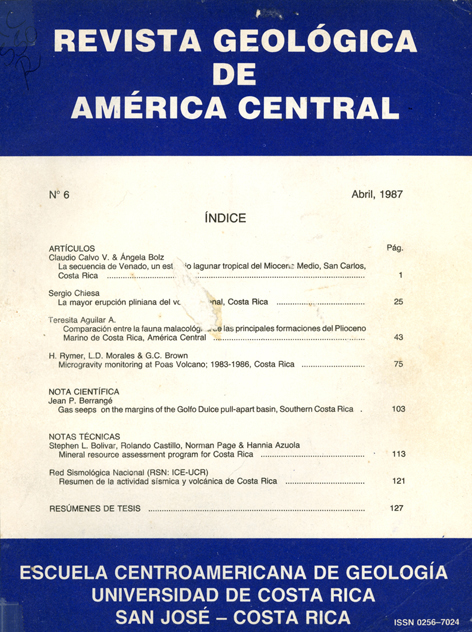Abstract
The discovery during a two month observation period at Poas volcano in 1983 of cyclic changes in microgravity associated with vesiculation cycles deep in the magma column led to a more detailed investigation in 1985. Statistical analysis has revealed that superimposed on the deep cycles there is a second effect. This is derived from the largest and best constrained gravity variations which occur locally at stations in the north of the active crater.
Concurrent microelevation observations have revealed that there are no significant relative elevation changes in the summit area of Poas, and therefore the gravity changes must be caused by sub-surface density variations. This and the tight spatial distribution of the largest microgravity changes limits the causative sub-surface density changes to a shallow depth. It is deduced that the vertical migration of the water/steam interface, about 30 m below the crater lake is the principal cause of the largest gravity changes in the active crater. These variations, which occur in the 200-300 m wide permeable, most recently-reactivated cylindrical feeder pipe beneath the crater lake, are superimposed on the broader vesiculation-induced density changes, occurring below 500 m in the 1 km wide partially~molten magma column (inferred from the 1983 data set). These results clearly show that important information on the behaviour of active but apparently stable volcanoes may be derived by microgravity monitoring.


